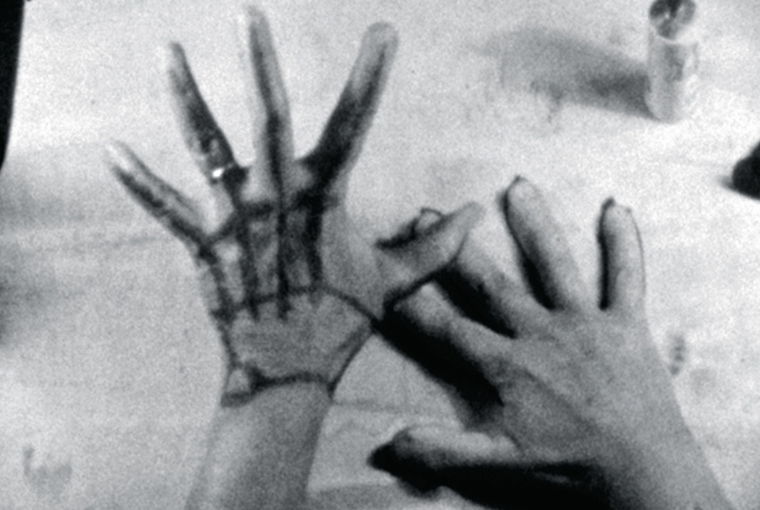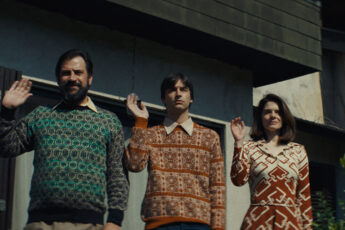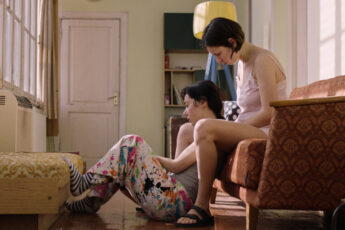
With a law (article 200) inherited from the Ceaușescu regime, which criminalized same-sex relationships, and which was repealed as late as 2001 as a way for the country to enter the European Union, Romania remains a largely traditional society regarding LGBTQ+ rights. However, customs and mores are slowly changing thanks to political, legal as well as artistic fights. That is, they were changing for a while. The idea that Romania is developing into an ever more tolerant society in which minorities enjoy equal rights is, of course, Whig history. Nevertheless, audiovisual art has substantially contributed to an increasing presence of LGBTQ+-related themes during the last two decades. Films such as Cristian Mungiu’s Beyond the Hills (2012) or Bogdan Olteanu’s Several Conversations about a Very Tall Girl (2018) and installation and video art, pioneered by artists such as Sorin Oncu, are prime examples of Romania’s emerging queer art. Showing such works in Romania often causes quite a stir. Robin Campillo’s 120 Beats Per Minute (2017) had one of its screenings interrupted by a Romanian Orthodox movement in Bucharest, exemplifying a divided society struggling with its Communist past, the transition towards neoliberal democracy and, more recently, the return to a populist nation state. This also poses the question of what type of LGBTQ+ culture Romania can put at the forefront, be it through the distribution of Western films, the support of domestic productions, or by positioning itself at the fringes of the art world, where Romanian queer art arguably had its origins.
This month we feature two articles that explore LGBTQ+-related themes in Romanian video and time-based media art. In her article on Bogdan Balla’s I Had Been Sleepwalking When I Saw All Those Colors (2021), Anna Doyle traces back the film’s homage to Derek Jarman, the English filmmaker and activist who died of AIDS in 1994 and who produced some of the most radical films of the Margaret Thatcher period. As Doyle writes in her article, Balla’s film explores the private space of intimate and bodily experiences in order to question the rules that dominate the public sphere. Private space as a locus of political refuge and queering of gender norms is also a foundational notion of Romanian queer time-based media art, as Valentina Iancu retraces in her article. Iancu draws parallels between queer themes in the actionist experimental cinema of Geta Brătescu, Ion Grigorescu, Alexandru Antik during the 1970s and 1980s and more recent and contemporary work by artists such as Alex Mirutziu, Simona Dumitriu and Ramona Dima, Katja Lee Eliad and Sorin Oncu. In particular, the bodily explorations of Grigorescu, which Iancu interprets as both a means of escaping the oppressive body politics of the Ceaușescu regime and a queering of masculinity, appear to have had a lasting influence on artists working today. While the new political order has mapped new forms of social control onto the human body – in particular via the revitalization of the church and heteropatriarchal capitalism – resistance towards dominant sex/gender regimes through deeply intimate and sensorial experiences thus remains essential to the artistic gesture of queering the body in Romania.
After the failure of the 2018 referendum regarding the definition of the family in the Romanian Constitution, a new, more activist approach to queer art developed, in part as a reaction to the referendum. Had the measure passed, same-sex marriage would have been made unconstitutional in the country (same-sex marriage is not permitted but falls under Romanian Statute Law). Today, it is thus no longer possible to unify queer art under one umbrella term. Some works have explored ironic performativity while others focus on using art as a form of political activism. The shift from the private to the public sphere may not least be due to a new imperative for nationhood. As Iancu observes in her article, the necessity for states to define a “national body” often motivates a coercive capacity, in which states use myths of a common identity against their own citizens. This coercion threatens to bring about violence against ethnic, racial and gender minorities; against the queer body that does not fit into the national narrative. More than a fight for recognition – in which queering is a question of intimacy, privacy and personhood – the return of populist nationalism may well bring about a fight for simple existence, in which queer artistic practices can no longer be dissociated from political activism. The late Sorin Oncu, who defined himself as a “protester artist”, perhaps best embodied this approach, in which being queer turns into a question of public participation and belonging. “I have abandoned issues related to gay suffering”, he said in one of his last interviews, focusing instead on “the anonymous claim of equality, majoritarian normativity and liability.”
***
Our two LGBTQ+-themed articles exploring Romanian visual culture are complemented by several pieces exploring related themes. Savina Petkova reviewed Ioseb Bliadze’s A Room of My Own, a Georgian film about two women whose difficult living conditions make them gravitate towards each other. Antonis Lagarias reviewed Dmytro Sukholytkyy-Sobchuk’s Pamfir, a story of a heroic family man that reproduces masculinist tropes, as well as Ruslan Fedotov’s Where Are We headed?, which approaches the Moscow metro system through the weird and wicked. Finally, Colette de Castro saw David Kapac and Andrija Mardešić’s oddball The Uncle, in which curious Christmas celebrations take place several times a year.
We hope you enjoy our reads.
Konstanty Kuzma & Moritz Pfeifer
Editors




Leave a Comment